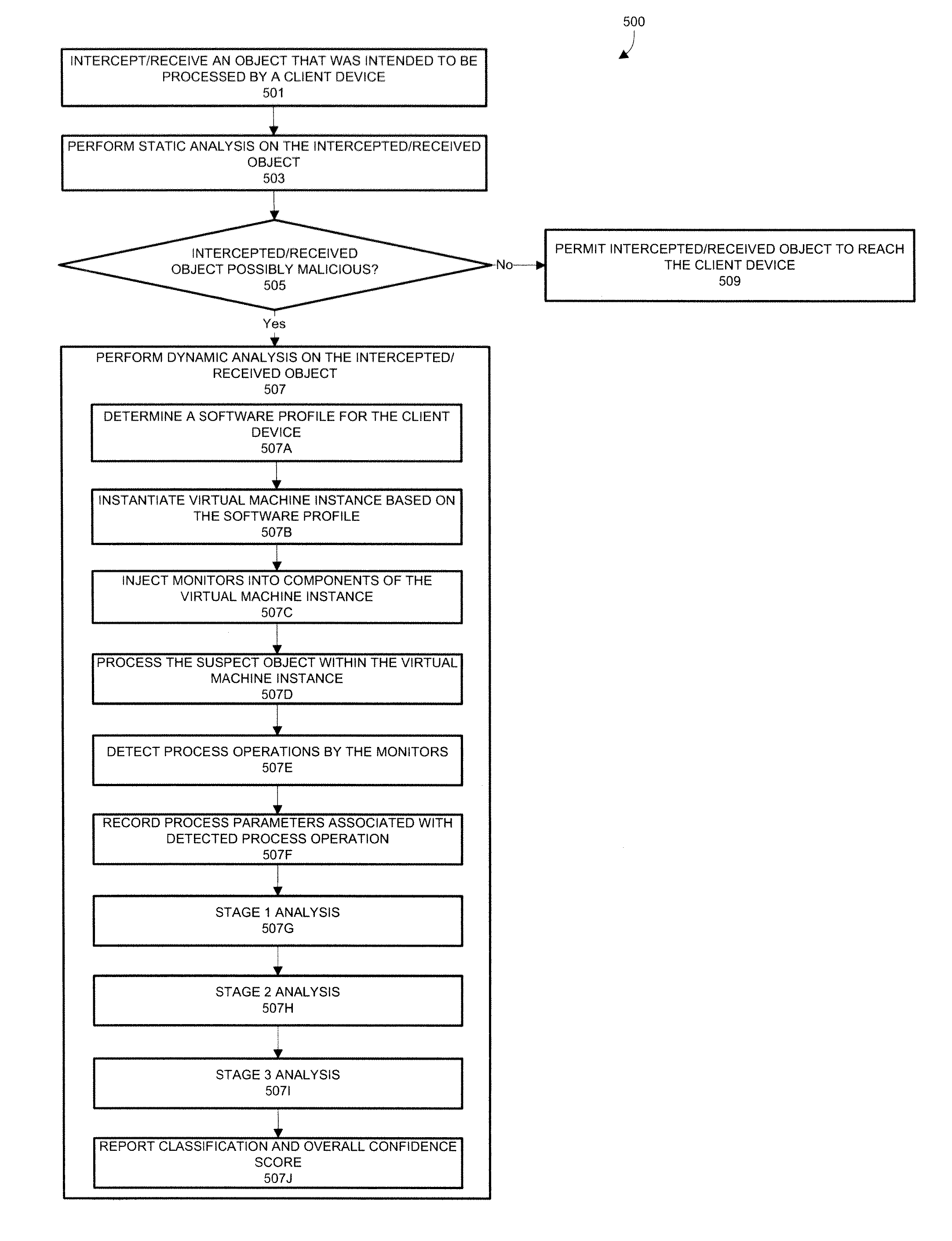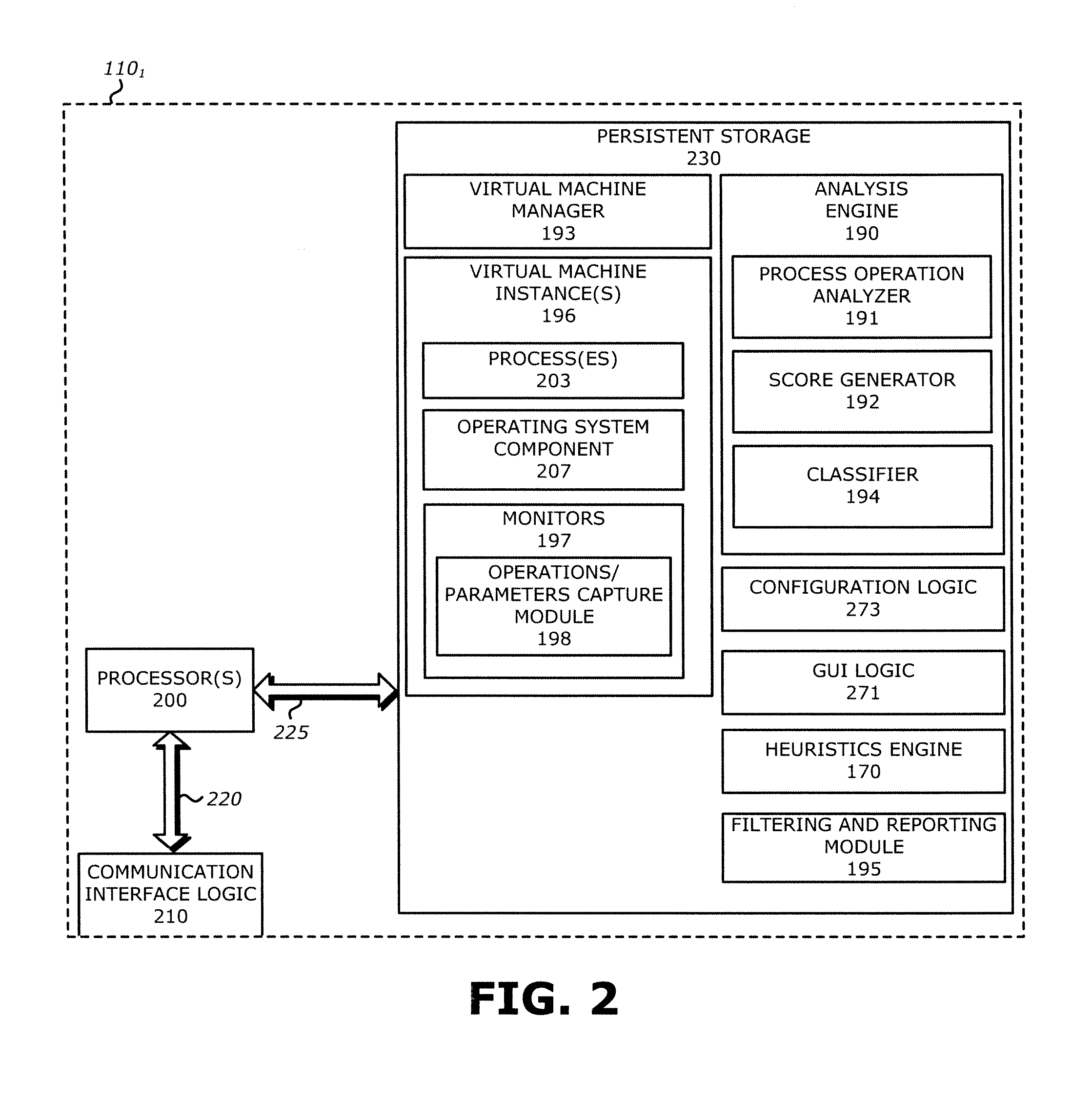Detection efficacy of virtual machine-based analysis with application specific events
a virtual machine and event detection technology, applied in the field of network and cyber security, can solve problems such as adverse influence or attack, web page to be requested from a malicious web site may be unknowingly requested, and malicious software (malware) has become a pervasive problem for internet users
- Summary
- Abstract
- Description
- Claims
- Application Information
AI Technical Summary
Benefits of technology
Problems solved by technology
Method used
Image
Examples
Embodiment Construction
I. Overview
[0015]In one embodiment, a malware content detection (MCD) system is provided that intercepts or otherwise captures objects for analysis. Subsequent to optional static analysis, dynamic analysis may be initiated for a suspect object. During this dynamic analysis, a virtual machine (VM) instance may process (e.g., open, load, detonate, and / or run) the suspect object such that process operations associated with the suspect object are performed. The VM instance is provided with monitors to capture activities and other behaviors of the suspect object during processing, and associate the behaviors with specific processes running within the VM instance. The monitors may inspect predefined sets of process operations and associated process parameters to infer and identify application specific behaviors.
[0016]A determined application specific behavior combined with a process identifier may be provided to the analysis engine as an event for classification of a suspect object. For e...
PUM
 Login to View More
Login to View More Abstract
Description
Claims
Application Information
 Login to View More
Login to View More - R&D
- Intellectual Property
- Life Sciences
- Materials
- Tech Scout
- Unparalleled Data Quality
- Higher Quality Content
- 60% Fewer Hallucinations
Browse by: Latest US Patents, China's latest patents, Technical Efficacy Thesaurus, Application Domain, Technology Topic, Popular Technical Reports.
© 2025 PatSnap. All rights reserved.Legal|Privacy policy|Modern Slavery Act Transparency Statement|Sitemap|About US| Contact US: help@patsnap.com



